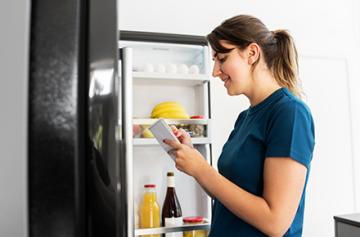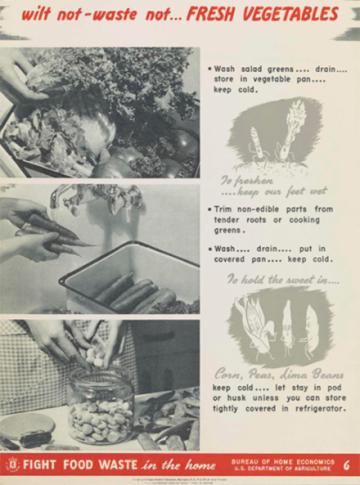Go Back To Step Forward this Earth Day: Ways To Fight Food Waste

Over the past year, Americans shifted to consuming more food at home instead of eating out at restaurants, sports venues and cafeterias, according to the Economic Research Service. However, many households wasted large amounts of food due to inadequate storage or not knowing what is in the pantry or fridge. Reducing food waste at home can stretch food budgets and benefit the environment and community. This Earth Day, find inspiration to curb food loss and waste with two tips that have stood the test of time:
1. Store food properly. By storing food at proper temperatures, it stays fresh longer. Safe food storage practices differ by food type and preparation method. Some items, like potatoes, should be stored in the pantry, while other foods like lettuce and berries are best stored in the refrigerator. Leftover meals and ingredients should be stored in the refrigerator or frozen for later use. While food storage technology was not as advanced in the 1940s, the USDA’s Bureau of Home Economics issued guidance on food conservation that is similar to today. For example, USDA recommended to keep vegetables cold to prevent them from spoiling in “Wilt Not-Waste Not: Fresh Vegetables.”

2. Use what is in the fridge and pantry. Many people are not aware of ingredients they already have at home. The food might spoil before it is used, or people might purchase more of something they did not realize they already had. The First In, First Out (FIFO) food storage method can also help with using up foods and involves storing older foods in the front or on top so that they are used first. In addition, checking to see what is on hand in the pantry or fridge before going to the store can prevent overbuying. The 1984 USDA pamphlet, “Plan Ahead to Make Your Food Dollars Count,” suggested using a shopping list to plan and prepare family meals for the week. Create a shopping list by choosing weekly recipes, checking for what ingredients are at home, then writing down what ingredients and amounts are still needed. Stick to the list to end your shopping trip with the expected amounts of food and money.
Having a variety of recipes and ideas for preparing foods can also help with using ingredients before they spoil. In the 1960s, the Agricultural Research Service (ARS) released a series of handouts that described budget-friendly foods and ways to use them to prevent waste. In “Eggs: A Good Choice for the Thrifty Family,” ARS provided instructions for cooking eggs in a variety of ways and included a custard dessert recipe.
It is clear that saving food remains a crucial part of helping families to save money. Explore more historical resources on preventing food waste in the National Agricultural Library’s Historical Dietary Guidance Digital Collection. – by Colleen Sideck, MPH, RDN, Food and Nutrition Information Center, National Agricultural Library

